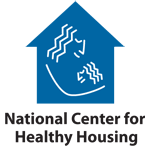|
|
Child Safety
We do not strictly control Google ad content. If you believe any Google ad is inappropriate, please email us directly here.
Sort results by: Date Added | Alphabetically - Excerpt from Modern Cleaning: The Evolution of Chemical Free Cleaning, by Janice and Tom Stewart © 2011
- While green products are on the rise, consumers must be wary of misleading "green" claims.
- The majority of U.S. families (67 percent) live in a home with at least one major health risk.
- What to look for, and resources to help you find the best, most sustainable products for your baby or child.
- How to make your home a healthier place.
- If you choose to use a powder on your baby, use it sparingly. Powders can easily become airborne and can enter the respiratory system causing irritation.
- Spring is in the air, and so are dust, pollen and other unwanted particles that can impact health and the dusting you need to do. What is the best way to Spring Clean Your Indoor Air?
- A major study published in Human Reproduction (January 2009), a European reproductive medicine journal, has found that pregnant women and women of child-bearing age in the United States are at greater risk than previously thought for infertility and reproductive problems as result of exposure to the toxic Teflon chemical PFOA (perfluorooctanoic acid).
- The organic food market slows amid recession, consumer doubt.
- Asthma is a rapidly growing public health problem. Here are recent facts from the CDC and EPA.
- Our children may be exposed to pesticides from residues found in their food. Here are ways you can reduce the risk of pesticide residues in your child’s diet.
- While many people enjoy wearing perfumes and using scented products, there is a growing outcry from some people who claim exposure to certain fragrances, including perfumes and scented products, adversely impacts their health.
- Chemicals not listed on product labels due to weak regulatory standards.
- GREENGUARD Environmental Institute (GEI) announced in November 2008 the initiation of a comprehensive product emissions standard for indoor products.
- Armed with this information, you can protect yourself, your children, and your pets from harmful pesticides.
- While a school building should be an ideal place for children to develop, thrive and learn, recent studies have found that poor indoor air quality (IAQ) is affecting children's health and their ability to learn.
- If you suspect your home has lead paint, there are steps you can take to reduce the risk.
- One of the greatest difficulties in estimating the toxicity of household products is the fact that most of the ingredients are not disclosed on product labels or other documents.
- Bisphenol A (BPA) is a chemical produced in large quantities for use mainly in the production of polycarbonate plastics and epoxy resins.
- Ingredients in common household cleaning products may be harmful to our health.
We do not strictly control Google ad content. If you believe any Google ad is inappropriate, please email us directly here.



Information provided by The Healthy House Institute is designed to support,
not to replace the relationship between patient/physician or other qualified
healthcare provider.
Education Partners
Ads, ad links, products and content on this page are not necessarily endorsed by these organizations.
|

We do not strictly control Google ad content. If you believe any Google ad is inappropriate, please email us directly here.
|








